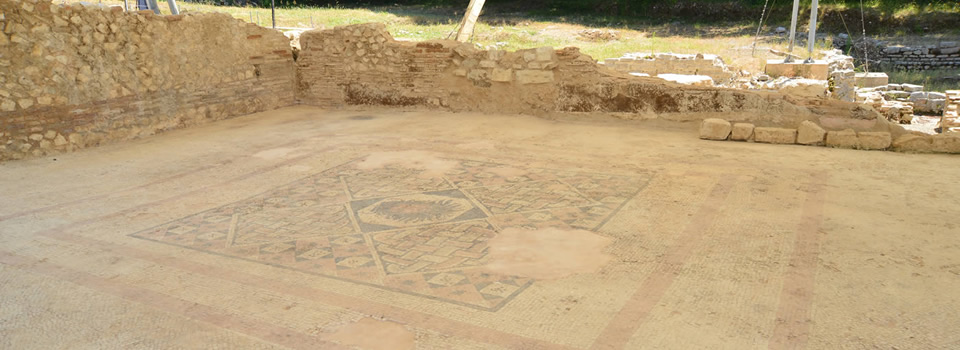THE PALEOPOLIS – MON REPOS MUSEUM
To the north and to the east of the Paleopolis roman baths the former royal estate of Mon Repos is located, an outstandingly beautiful natural park where visitors can see rare species of trees, bushes and plants. The walk in the park may be combined with the visit to important ancient monuments of religious character, such as the sanctuary of Hera Akraia, the shrine of Apollo Korkyraios and the Kardaki temple which is one of the best preserved monuments of Kerkyra.
Apart from these antiquities, there are also other buildings inside the park, such as the post-Byzantine church of Savior Christ, the monastery of St. Euphemia and several more recent buildings with the Mon Repos villa being the most significant of all. This is a luxurious two-story building which was built according to the Regency style and is one of the earliest examples of neoclassical architecture in Greece.
The villa was built between the years 1828-1831 as the summer residence of the English Commissioner Frederic Adam and his Greek wife, Diamantina Palatianou. The couple used the villa for a very short time, until 1832. After that, the villa served various functions depending on the needs of each era. So, it occasionally housed the School of Fine Arts, a ……School (seminary) and hosted significant personalities. Today, the villa houses the Paleopolis – Mon Repos Museum.
On the museum’s ground floor, around a central colonnade hall, nine halls are developed. One of these halls functions as ticket office, while in the other halls the visitor can be informed about the history of the villa, see the representation of a room equipped with original furniture and decorative objects of the Regency style, learn about the history of the Paleopolis excavations through models, photographs, maps, time lines or even enjoy watercolors with rare plants that flourish in the park area.
On the first floor, six halls house the archaeological exhibition of the museum, which presents through various finds from the Paleopolis and the Kanoni area the history of ancient Kerkyra. In particular, the hall 11 is dedicated to the baths and therefore, objects are exhibited associated with the bathing process and their function such as vessels for body care, for the offering of beverages and the transfer of water as well as other personal belongings of the bathers. In hall 10, the exhibits come from the marketplace area. A “treasure” of 508 silver Corfiot and Corinthian coins (end of the 4th and early 3rd century B.C.) that was found in a small vase in the wider area of the Paleopolis roman baths deserves special interest.




